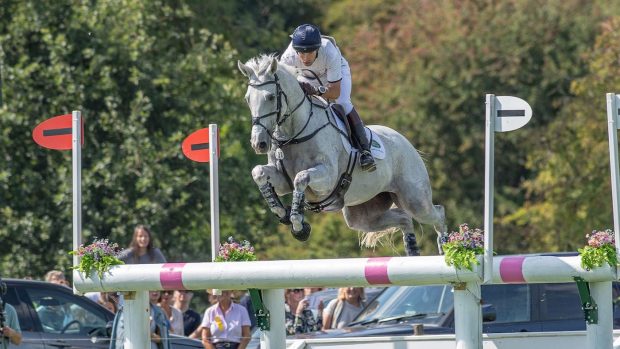For many years it has been recognised that abnormal respiratory sounds are linked to upper airway obstruction in horses.
Recently a variety of obstructions have been identified, largely thanks to the use of treadmill endoscopy whereby the horse is examined during strenuous exercise on a high-speed treadmill.
Now, recent research has simplified this, so it is possible to perform endoscopy during ridden exercise.
What’s that noise?
All normal horses make quiet breathing sounds. These are more evident when the horse breathes out (expiration) and may range from a soft blowing noise to a louder more vibrant sound associated with vibration of the nostrils (high-blowing).
In contrast, very little is usually heard when the horse breathes in (inspiration), even during strenuous exercise.
Abnormal respiratory sounds are created by air turbulence in the upper airways as a result of some obstruction to normal airflow. Various conditions can cause abnormal sounds and in many horses more than one condition may be present.
When to investigate?
If abnormal respiratory noise can be heard, it is likely that the horse has some form of obstruction to its airflow. This can also cause poor athletic performance by reducing the amount of oxygen available for the muscles to work effectively.
Detecting what’s wrong
It is now understood that performing an endoscopic examination of the upper airways when the horse is standing at rest is not always a reliable way to diagnose obstructions.
Using a treadmill
Exercise endoscopy can be really useful to provide an accurate diagnosis. Until now, this has meant the horse has to be exercised on a high-speed treadmill.
Unfortunately, the lack of centres with such facilities as well as misconceptions regarding the cost and safety of this procedure, mean that many horses are not referred for treadmill endoscopy, but undergo surgical treatment without an accurate diagnosis first being established.
New ideas
Over the past four years, a portable remote-controlled endoscope for use during ridden exercise has been developed at Bristol University with the images being viewed on a separate screen as the horse works. This project has been aided by funding from the Horserace Betting Levy Board. The result is an exciting new system which is small enough to be mounted on the horse’s head.
The way forward
This new method of exercise endoscopy should allow more horses to be fully assessed and this will have a considerable impact in improving equine welfare. Certainly, it may help to identify which are the most effective treatments for upper airway disorders.
Dr Sam Franklin and Kate Allen are from the University of Bristol Equine Sports Medicine Centre
To read the article in full, see this week’s issue of Horse & Hound (13 November, ’08)




